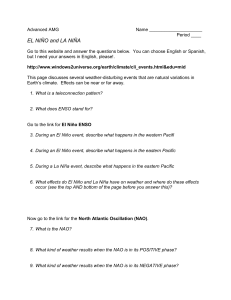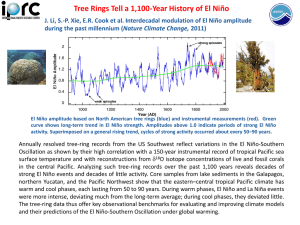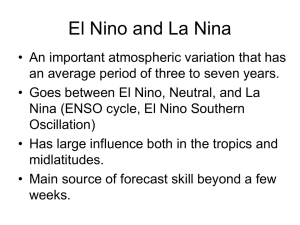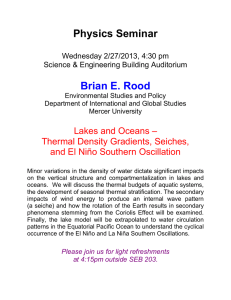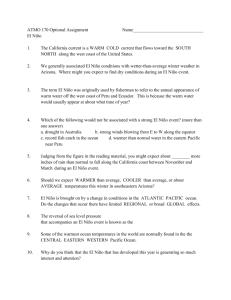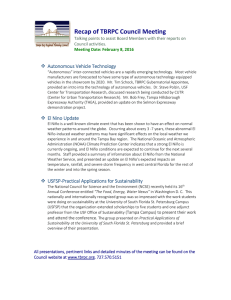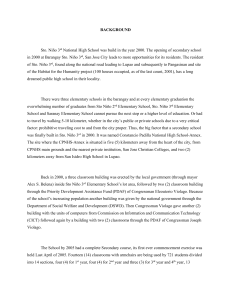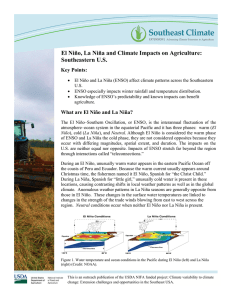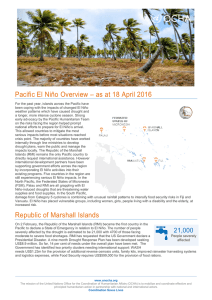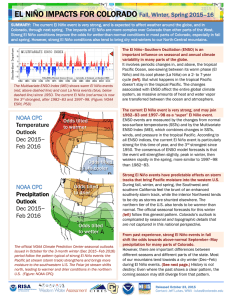Climate Change Mark Cane Lamont Doherty Earth Observatory of Columbia University
advertisement
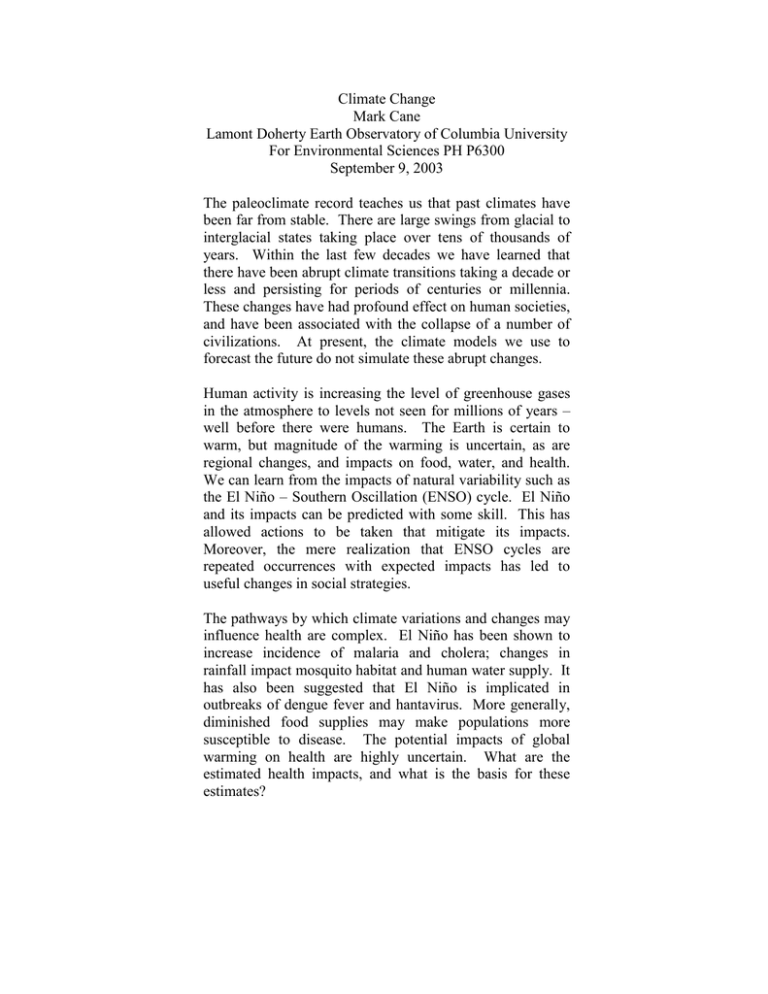
Climate Change Mark Cane Lamont Doherty Earth Observatory of Columbia University For Environmental Sciences PH P6300 September 9, 2003 The paleoclimate record teaches us that past climates have been far from stable. There are large swings from glacial to interglacial states taking place over tens of thousands of years. Within the last few decades we have learned that there have been abrupt climate transitions taking a decade or less and persisting for periods of centuries or millennia. These changes have had profound effect on human societies, and have been associated with the collapse of a number of civilizations. At present, the climate models we use to forecast the future do not simulate these abrupt changes. Human activity is increasing the level of greenhouse gases in the atmosphere to levels not seen for millions of years – well before there were humans. The Earth is certain to warm, but magnitude of the warming is uncertain, as are regional changes, and impacts on food, water, and health. We can learn from the impacts of natural variability such as the El Niño – Southern Oscillation (ENSO) cycle. El Niño and its impacts can be predicted with some skill. This has allowed actions to be taken that mitigate its impacts. Moreover, the mere realization that ENSO cycles are repeated occurrences with expected impacts has led to useful changes in social strategies. The pathways by which climate variations and changes may influence health are complex. El Niño has been shown to increase incidence of malaria and cholera; changes in rainfall impact mosquito habitat and human water supply. It has also been suggested that El Niño is implicated in outbreaks of dengue fever and hantavirus. More generally, diminished food supplies may make populations more susceptible to disease. The potential impacts of global warming on health are highly uncertain. What are the estimated health impacts, and what is the basis for these estimates?

